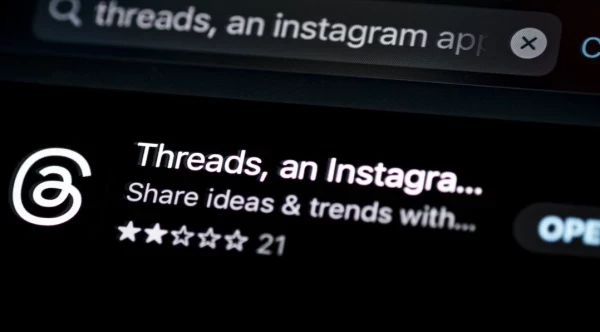3 Examples of Gamification That Elevate Digital Customer Experiences
Add bookmark
Gamification has become a major trend in the eCommerce space. With new rewards systems and loyalty programs, customers have increasingly adopted new purchasing habits to rack up these valuable virtual points.
New research suggests that gamification formats will continue to rise within shopping apps, with users downloading around a billion mobile gaming titles each week and consumer spend hitting $22 billion in the first quarter of 2021.
By implementing a more interactive format, brands are hoping to attract more digital-savvy millennial and Gen Z shoppers. Additionally, some brands are even partnering with mobile games to offer these unique digital experiences.
Since the start of the pandemic, the retail space has been heavily impacted by social distancing guidelines, forcing brands to both reach and satisfy customers virtually. This new trend of gamification is likely to alleviate and restore some interactivity that customers lost when retail spaces effectively ‘shut down’, and also reclaim much of the excitement associated with an in-store interaction.
In achieving a more engaging customer experience online, companies can hopefully maintain the influx of new digital shoppers they accumulated during the pandemic.
Here are a few examples of new and innovative gamification examples in the evolving retail space:
Hybe
Hybe is the epitome of an exciting and unique online gamification experience. The shopping platform, initially introduced in 2018, offers users access to fixed-rate mystery boxes — which upon opening (virtually) may be filled with thousands of dollars worth of luxury and in-demand items like sneakers, jewelry and electronics.
The platform is attempting to redesign the luxury shopping experience by recreating the exciting ‘unboxing’ process, promoting product discovery and offering a connection with users' social media platforms to enhance engagement in the digital environment.
With 1.5 million users, the platform has seen impressive growth since the pandemic began. Some claim its success throughout this period is a product of the consumer-friendly style of shopping, working to replace or mimic the existing mall experience.
Its success may also indicate a trend of customers seeking more interactive and unique online experiences. After spending a year at home, younger shoppers lost the ability to shop with friends — making room for a more performative and shareable online experience. As customers are able to ‘show off’ their surprise boxes and new luxury items, they regain a sense of collaboration in the eCommerce environment. This kind of engagement also benefits brands, allowing for organic user-generated content and social media reach.
Additionally, the gamification aspect keeps customers coming back to see if they can win bigger or better luxury items, prompting a promising form of customer loyalty and retention.
Chipotle ‘Burritos or Bitcoin’
Another recent use of gamification in the innovative fast-casual industry was Chipotle’s National Burrito Day ‘Burritos or Bicoin’ initiative. The chain introduced a new game inspired by the growing cultural interest in cryptocurrency for its annual celebration.
In the game, Chipotle playfully claimed it lost the passcode to its digital wallet and encouraged fans to help regain access in a ‘chiptocurrency’ rescue mission. Users were given 10 attempts to guess the passcode, and if successful, were entered to win a free burrito or up to $25,000 in Bitcoin.
‘Burritos or Bitcoin’ offers a more short-lived and celebratory example of gamification that worked to engage customers and effectively reward them for their active participation in the game. It also illustrates a modern approach to a giveaway that prompts users to join in and interact with the brand in a new and exciting way. Additionally, it facilitates a greater sense of collaboration, giving users the opportunity to share with their friends and react online.
When users promote gamified elements, it effectively elevates both the customer experience and brand engagement, by offering a way to reward loyalty and support engaging interactions. Brands, then, simultaneously receive more genuine and organic promotion.
Tophatter
eCommerce platform Tophatter added a new gamification element to its already hyper-interactive website design. The site promotes a live-auction appeal, where users bid on various products in a time-sensitive, casino-like environment — sound effects and all.
Additionally, the ‘discovery shopping marketplace’ announced it would be integrating mini-games to the platform to further engage customers and keep them earning points to redeem personalized rewards and receive advantages on future bids.
Ashvin Kumar, co-founder and CEO of Tophatter stated, "Almost all mobile shopping is built to optimize the path-to-purchase, but that's never been our focus. Tophatter's aim for the last decade is to create a discovery shopping platform that makes online discount shopping fun by adding the entertainment of a game to the experience."
This unique outlook has clearly inspired a distinct and individual platform, one that not all shoppers may respond to, but it offers a potential blueprint for the future of a more engaging and interactive online shopping experience. With the rise of TikTok and other visual social platforms, customers clearly enjoy highly stimulating, sensory mobile experiences. In adopting this strategy for mobile shopping, retailers could successfully elevate the customer experience and leverage entertainment to provide customers with a unique and exciting new path-to-purchase.
Photo by Pixabay






























